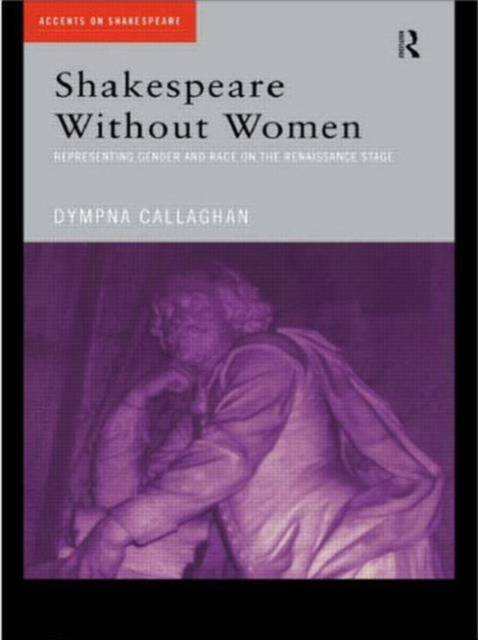
- Afhalen na 1 uur in een winkel met voorraad
- Gratis thuislevering in België vanaf € 30
- Ruim aanbod met 7 miljoen producten
- Afhalen na 1 uur in een winkel met voorraad
- Gratis thuislevering in België vanaf € 30
- Ruim aanbod met 7 miljoen producten
Zoeken
€ 79,45
+ 158 punten
Omschrijving
Shakespeare Without Women is a controversial study of female impersonation, and the connections between dramatic and political representation in Shakespeare's plays. In this original and challenging book, Callaghan argues that Shakespeare did not include women, and that his transvestite actors did not represent women, and were not, furthermore, meant to do so. All Shakespeare's actors were, of historical necessity, (white) males which meant that the portrayal of women and racial others posed unique problems for his theatre. What is important, Shakespeare Without Women claims, is not to bemoan the absence of women, Africans, or the Irish, but to determine what such absences meant in their historical context and why they matter today. Callaghan focuses in the implications of absence and exclusion in several of Shakespeare's works: * the exclusion of the female body fromTwelfth Night * the impersonation of the female voice in the original performances of the plays * racial impersonation in Othello * echoes of removal of the Gaelic Irish in The Tempest * the absence of women on stage and in public life as shown in A Midsummer Night's Dream.
Specificaties
Betrokkenen
- Auteur(s):
- Uitgeverij:
Inhoud
- Aantal bladzijden:
- 236
- Taal:
- Engels
- Reeks:
Eigenschappen
- Productcode (EAN):
- 9780415202329
- Verschijningsdatum:
- 4/11/1999
- Uitvoering:
- Paperback
- Formaat:
- Trade paperback (VS)
- Afmetingen:
- 138 mm x 216 mm
- Gewicht:
- 376 g

Alleen bij Standaard Boekhandel
+ 158 punten op je klantenkaart van Standaard Boekhandel
Beoordelingen
We publiceren alleen reviews die voldoen aan de voorwaarden voor reviews. Bekijk onze voorwaarden voor reviews.











